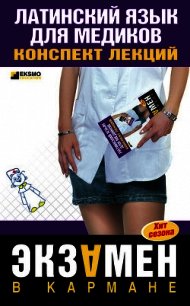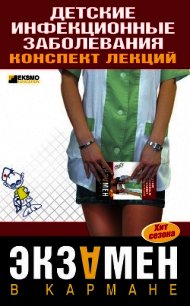Английский язык для медиков: конспект лекций - Беликова Елена (книги хорошего качества TXT) 📗
15. My father goes to… work in… morning and comes… home in… evening.
16. I get up at… half past seven in… morning and go to… bed at… quater to eleven in… evening.
17. When does your mother leave… home for… work?
18. She leaves… home for… work at… quarter past eight.
19. When do you leave… home for… school?
20. I leave… home for… school at… half past… eight.
Answer the questions.
1. What are the muscles?
2. What contraction produces various movements?
3. What may the muscles be divided from?
4. What does the nervous system control?
5. What does the muscular tissue consist of?
6. How many varieties of muscle fibres are there?
7. How many per cents does muscle tissue comprise?
8. For how many groups are all the muscles traditionally divided?
9. How sometimes are muscles called?
10. What does connective tissue connect?
Make the sentences of your own using the new words (10 sentences).
Find the definite and indefinite articles in the text.
Find one word, which is a little bit different in meaning from others (найдите одно слово, которое немного отличается от других по смыслу):
1) a) work; b) job; c) rest;
2) a) class; b) student; c) sea;
3) a) home; b) house; c) garage;
4) a) lift; b) down; c) rise;
5) a) white; b) pink; c) scarlet.
ЛЕКЦИЯ № 11. Bones
Bone is the type of connective tissue that forms the body's supporting framework, the skeleton. In addition, bones act as levers for muscles and serve to protect the internal organs from injury. They always act as a storehouse for calcium and phosphorus. The bone marrow inside the bones is the body's major producer of both red and white blood cells.
Bones vary somewhat according to a person's age and sex. The bones of women are generally lighter than those of men, while children's bones are more resilient than those of adults and tend to bend rather than fracture when abnormal pressure is applied to them. Bones also respond to certain physical physiological changes. For example, bones tend to atrophy, or waste away, when muscular activity in a region is decreased, as when a limb is afflicted with a paralytic disease.
Bones are generally classified in two ways. When classified on the basis of their shape, they fall into four categories: flat bones, such as the ribs; long bones, such as the thigh bone; short bones, such as the wrist bones; and irregular bones, such as the vertebrae. When classified on the basis of how they develop, bones are divided into two groups: endochondral bones and intramembraneous bones. Endochon-dral bones, such as the long bones and the bones at the base of the skull, develop from cartilage tissue. Intramembraneous bones, such as the flat bones of the roof of the skull, are not formed from cartilage but develop under or within a connective tissue membrane. Although en-dochondral bones and intramembraneous bones form in different ways, they have the same structure.
The formation of bone tissue (ossification) begins early in embryo-logical development, when the embryo is two months old. The bones continue to grow during childhood and adolescence, reaching their full size when the person is about 25.
Most adult bone is composed of two types of tissue: an outer layer of compact bone and an inner layer of spongy bone. Compact bone is strong and dense. Spongy bone is light and porous and contains bone marrow. The amount of each type of tissue varies in different bones. The flat bones of the skull consist almost entirely of compact bone, with very little spongy tissue. In a long bone, such as the thigh bone, the shaft, called the diaphysis, is made up largely of compact bone. While the ends, called epyphyses, consist mostly of spongy bone. In a long bone, marrow is also present inside the shaft, in a cavity called the medullary cavity.
Surrounding every bone, except at the surface where it meets another bone, is a fibrous membrane called the periosteum. The outer layer of the periosteum consists of a network of densely packed collagen fibres and blood vessels. This layer serves for the attachment of tendons, ligaments, and muscles to the bone and is also important in bone repair.
The inner layer of the periosteum has many fibres, called fibres of Sharpey, which penetrate the bone tissue, anchoring the periosteum to the bone. The inner layer also has many bone-forming cells, or osteo-blasts, which are responsible for the bone's growth in diameter and the production of new bone tissue in cases of fracture, infection.
In addition to the periosteum, all bones have another membrane, the endosteum. It lines the marrow cavity as well as the smaller cavities within the bone. This membrane, like the inner layer of the periosteum, contains osteoblasts, and is important in the formation of new bone tissue.
Bone tissue consists largely of a hard substance called the matrix. Embedded in the matrix are the bone cells, or osteocytes. Bone matrix consists of both organic and inorganic materials. The organic portion is made up chiefly of collagen fibres. The inorganic portion of matrix constitutes about two thirds of a bone's total weight. The chief inorganic substance is calcium phosphate, which is responsible for the bone's hardness. If the calcium were removed from a bone, the bone would loose its rigidity and become flexible. If the organic portion were burned out, or calcined, the bone would retain its shape but crumble under the slightest pressure. In the formation of intramembraneous bone, certain cells of the embryonic connective tissue congregate in the area where the bone is to form. Small blood vessels soon invade the area, and the cells, which have clustered in strands, undergo certain changes to become osteoblasts. The cells then begin secreting collagen fibers and an intercellular substance. This substance, together with the collagen fibers and the connective tissue fibers already present, is called osteoid. Osteoid is very soft and flexible, but as mineral salts are deposited it becomes hard matrix. The formation of endochondral bone is preceded by the formation of a cartilaginous structure similar in shape to the resulting bone. In a long bone, ossification begins in the area that becomes the center of the shaft. In this area, cartilage cells become osteo-blasts and start forming bone tissue in the same manner as intramem-braneous bone is formed. This process spreads toward either end of the bone, but while this is happening the cartilage cells at each end also become osteoblasts and start forming bone. The only areas where cartilage is not soon replaced by bone tissue are the regions where the shaft joins the two epiphyses. These areas, called epiphyseal plares, are responsible for the bone's continuing growth in length, As the bone grows, each epiphyseal plate forms new cartilage, which is then replaced by bone. When the epiphyseal plates stop forming cartilage, the bone stops growing. The bone's growth in diameter is due to the addition of layers of bone around the outside of the shaft. As they are formed, layers of bone on the inside of the shaft are removed. Thus, when a long bone grows in diameter, the compact bone of the shaft does not get thicker, but the marrow cavity gets larger. In all bones, the matrix is arranged in layers called lamellae. In compact bone, the lamellae are arranged concentrically around blood vessels, and the space containing each blood vessel is called a Haversian canal. The osteocytes are located between the lamellae, and the canaliculi containing their cellular extensions connect with the Haversian canals, allowing the passage of nutrients and other materials between the cells and the blood vessels. Besides the blood vessels in the Haversian canals, bone tissue contains many smaller blood vessels that extend from the periosteum and enter the bone through small openings called canals of Volkmann. These vessels lead to those in the Haversian canals. In long bones there is an additional blood supply, the nutrient artery, which represents the chief blood supply to the marrow. The structure of spongy is similar to that of compact bone. However, there are fewer Haversian canals, and the lamellae are arranged in a less regular fashion, forming spicules and strands known as trabeculae.




